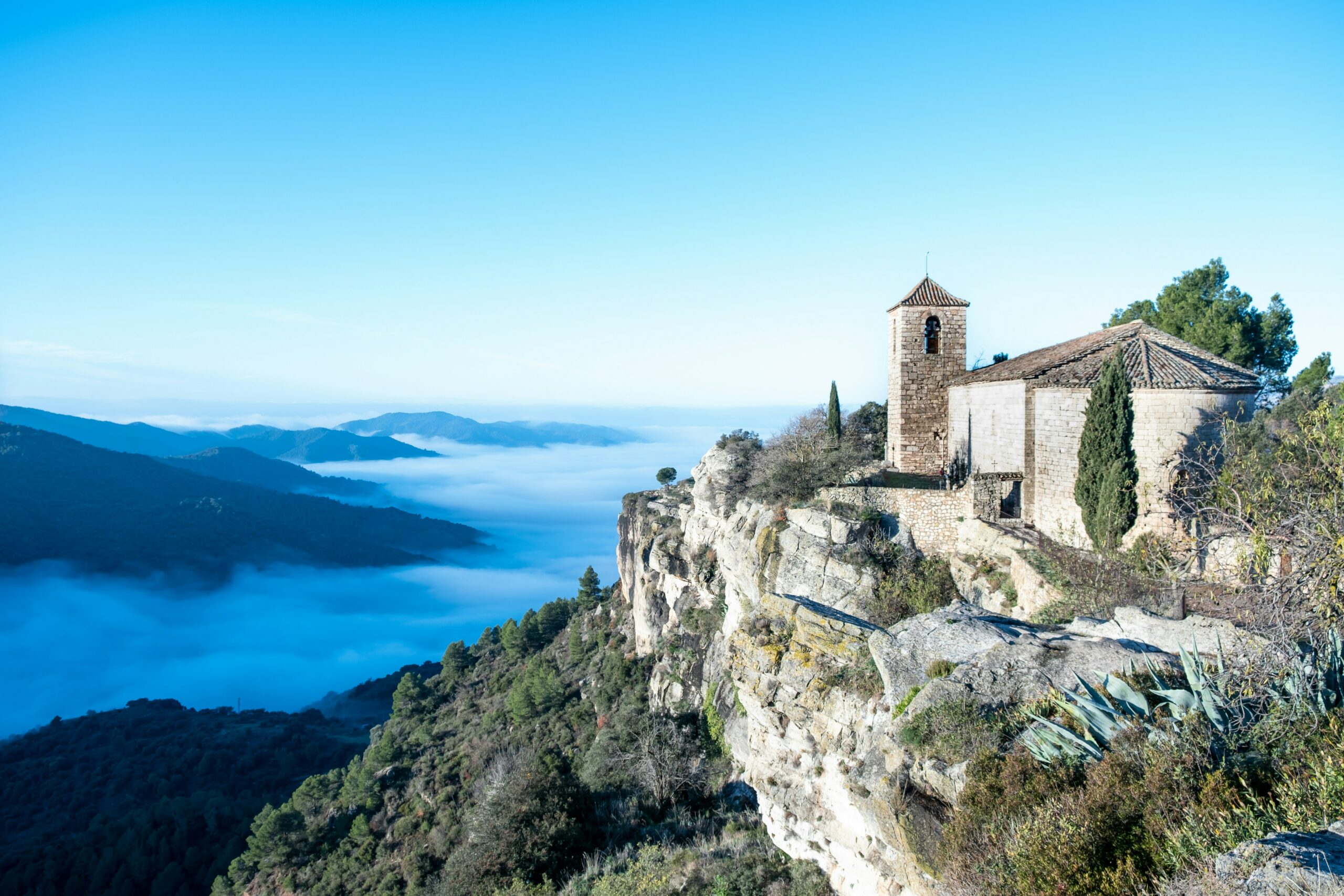Catalonia’s renowned yet infrequently visited wine region is ripe for discovery.
Siruana (photo by Daniel Born/Unsplash)
Priorat: Catalonia's renowned yet infrequently visited wine region is ripe for discovery
By Bruce Wallin
Catalonia wine country. If those three words have you dreaming about Garnacha and hilltop medieval villages, you’ll be happy to learn that the reality of Priorat might be even better than the fantasy.
Set in the Montsant Mountains west of Tarragona (a worthy destination in its own right), Priorat is young by comparison with other top viticultural regions in Europe. Despite its proximity to Barcelona, the area is even newer to tourism, traditionally passed over by just about everyone aside from rock climbers and oenophiles.
That’s about to change. New luxury hotels are opening—including Gran Hotel Mas d’en Bruno, recently named Best Resort Hotel and Spa in Europe by the readers of Travel & Leisure—and discriminating travelers are starting to follow. We spoke with Mas d’en Bruno’s owner and operator, David Stein, to get the scoop on this go-before-everyone-discovers-it destination.

Tapas of the Rock
“In the spectacular hilltop village of Siurana, there’s a rustic restaurant called Refugi that hangs over a cliff, and you have to walk through a rock to get to it. You sit on what are like school benches, but it’s got a sophisticated tapas menu, the people are great, and the view is amazing. It looks out over one of the best rock-climbing areas in the world, and the climbers look like little ants walking around on the other side of the valley... Siurana was the last stronghold of the Moors in Catalonia, and there’s a legend about a Moorish queen who was having a feast as the Catalans were approaching the town gates. She didn’t want to die at the hands of the Catalans, so she jumped on her stallion to ride off the precipice. The story goes that the stallion ran to the edge and then stopped, and the queen went flying to her death. Supposedly there’s still a hoof print at the edge.”
Preserved in Time
“Priorat was one of the last places to get hit when phylloxera wiped out European vines in the late 19th century. But unlike Bordeaux or Burgundy or Rioja—where they had other things going and could sustain themselves—Priorat was completely dependent on wine, and so people left. About 35 years ago, a few families started coming back, and there was a renaissance of great wines. Fortunately, the onslaught of development that came in the 1960s and destroyed a lot of the beautiful villages in Europe, that didn’t hit Priorat. Today, from a development standpoint, it’s probably the most restrictive wine area in Spain, if not in Europe, and that’s what makes it so special… A fellow American I was speaking with recently said it reminded him of what he envisioned Tuscany would’ve been like years ago, long before Under the Tuscan Sun. It’s also a fraction of the cost of places like Tuscany and Bordeaux, so it’s a great value.”

Big Reds
“Priorat is one of only two regions in Spain to have the highest level of wine classification. A small cadre of passionate winemakers led the rejuvenation of Priorat wines in the 1990s, and now there are 106 small-production wineries, spread throughout the region, with some bottles from wineries like Álvaro Palacios selling for over 1,000 euros. The two big grapes are Garnacha and Cariñena, and something like 95 percent of the wine is red. But the 5 percent white was probably zero before, and now the younger generation is starting to create some fantastic whites.”
Two for Tastings
“I always recommend tours and tastings at Clos de L’Obac and Perinet. Clos de L’Obac is historic, and you can learn firsthand about the Pastrana family and how everything got started in the village of Gratallops. And then Perinet is a very high-tech, magnificent facility. They have a fantastic vintner, Dr. Toni Sanchez, who can go into any depth you want during your tour. You can also do a barrel tasting, and the barrel room is spectacular, with Gaudi–esque characteristics.”

Local Flavor
“Priorat is a strong wine, so you want to eat something with it. It’s not like having a glass of Pinot Grigio and a slice of cheese—you want to have a meal if you’re going to have a red Priorat. The olive oil from the region is fantastic. They have local sausages, cheeses, and black-rice dishes. They also have something called fideuà. It's like a pasta, very thin, but it’s made like a paella in a paella pan. Locals have great food, they like to eat, and they like to enjoy their wines.”
The Long Run
“There are a couple of other nice hotels in Priorat, including a new one in our village
called Ora, but you can’t build 30 of these places here. There’s just not enough places
to build them. It took me seven years to get the entitlements for Gran Hotel Mas d’en
Bruno, so it’s not going to be overextended in terms of tourism anytime soon. It won’t
ever get saturated.”


